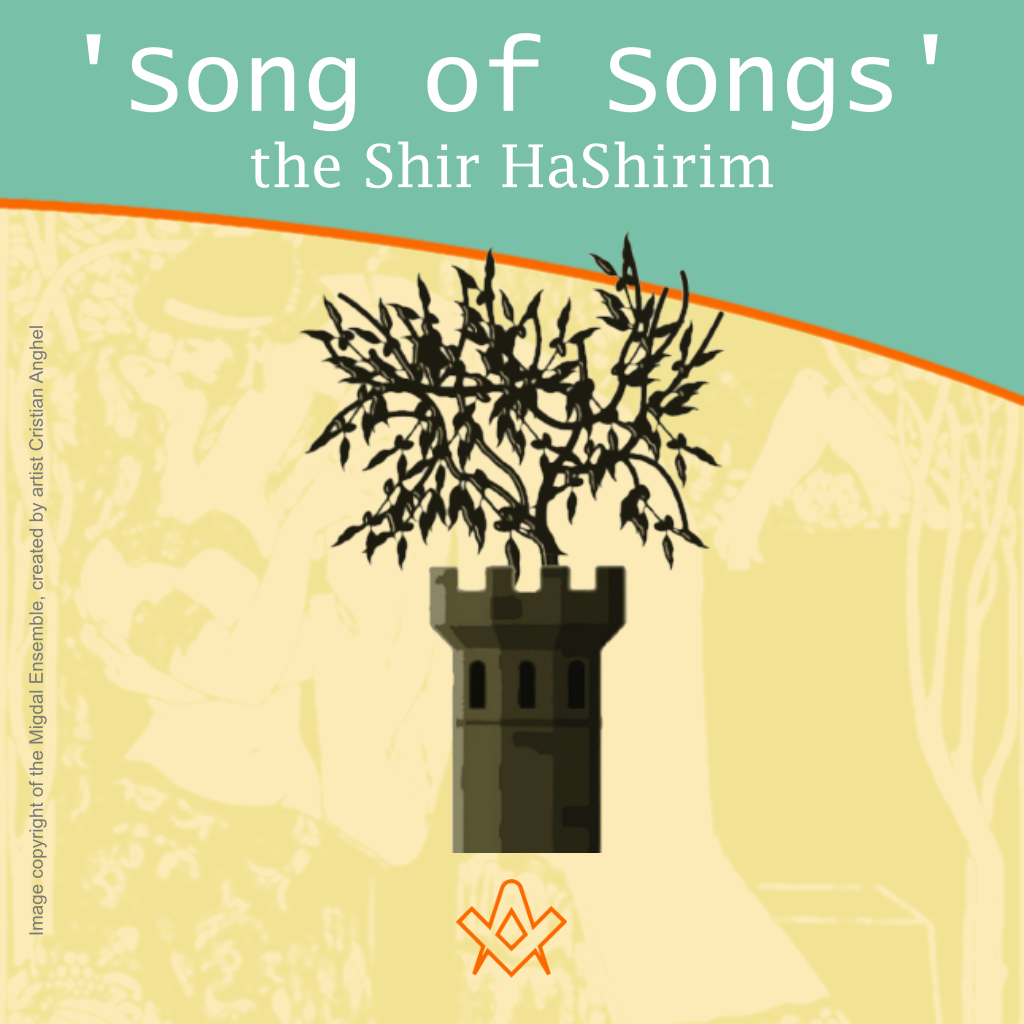I think in every work of art there is something sacred – no matter what kind of discipline we are talking about.
Even more, it exists in many of our daily creative actions too. I am not thinking only of our rituals, but simply the act of making a wheel, lighting the fire, working the land, building temples, altars (tens of thousands of years ago or today), from Stonehenge to Sarmizegetusa, in all the Middle East, Greece and so on, there is something more than a simple, physical act, and the tiny part of divinity inside each of us drives us.
About Sacrality and a Première of The Song of Songs – Shir HaShirim
By composer and artistic coordinator: Laurențiu Ganea
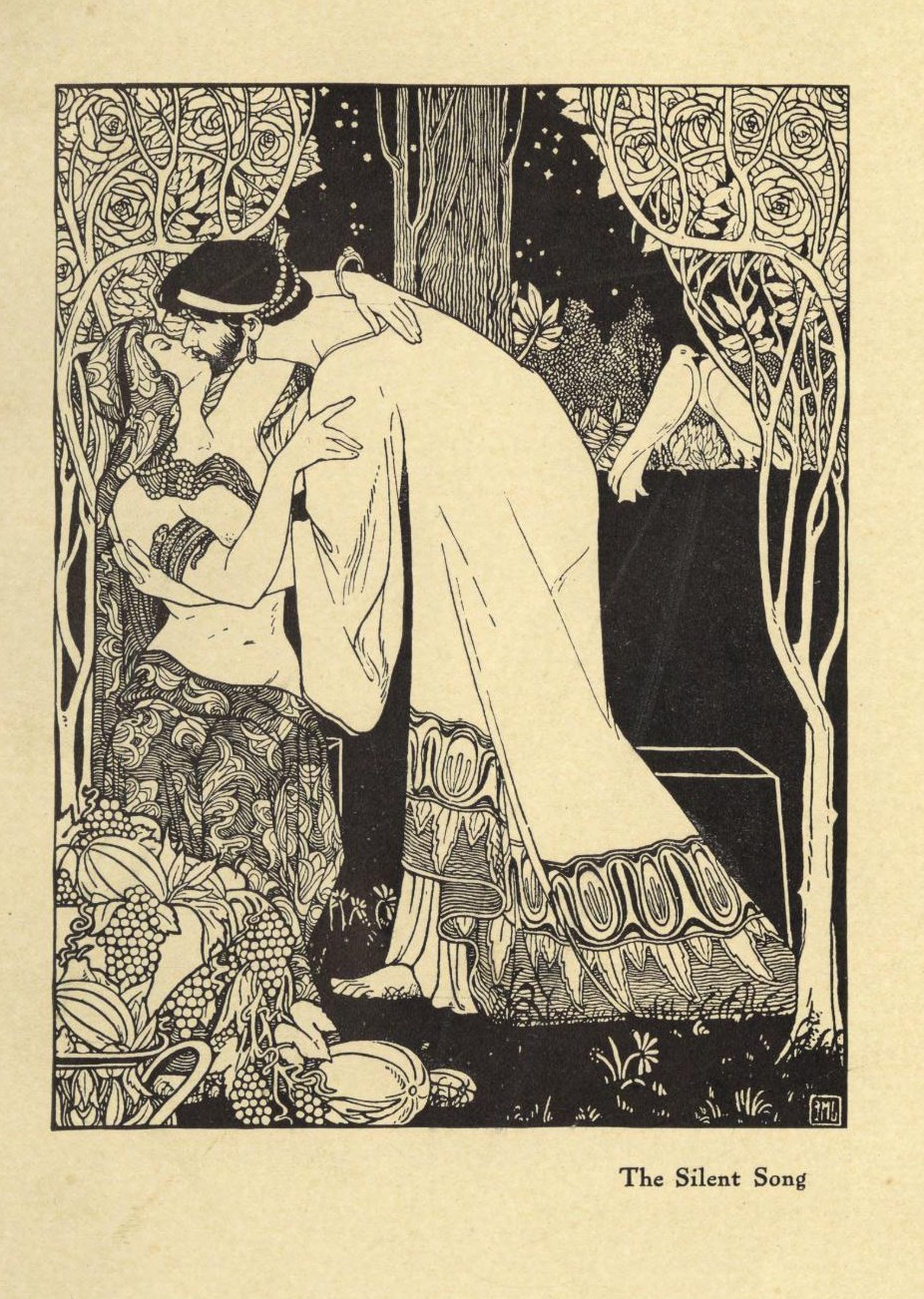
‘The Silent Song’ – from the book Judah illustrated by Ephraim Moses Lilien (1874-1925)
IMAGE LINKED: wikimedia Attribution 4.0 International (CC BY 4.0)
One day, some time ago, I found a little book amongst my father’s hundreds of books. It was a translation from Shir HaShirim, ‘The Song of Songs’.
The book includes the original Hebrew text, the Septuagint, the Latin version and a good translation in Romanian.
At that moment, when I opened it, I decided to compose “something for the holiday”, taking two or maximum three months.
After several orchestral compositions this one would be the first one using text.
The decision was to use the Hebrew text, but I had no idea how to write in Hebrew. I started reading about this sacred text, learning, and asking scholars.
After I understood the basics of the book (in fact, it is a scroll), I started to mentally build the project.
It actually took twelve years to just compose the music. The result is a composition influenced by synagogal chants and authentic local folklore.
I worked on every syllable or groups of syllables, the spoken/sung text together with the played text of the ensemble. My intention was, from the beginning, to be close as possible to the original.
The ensemble is not playing a simple accompaniment role, but is a single one, a unit with vocal soloists.
According to the text, the one who created Shir HaShirim is King Solomon, making the text c.3000 years’ old.
I decided (for the sake of tradition) for the chamber ensemble to be realized by instruments mentioned in Bible or related to them.
So, there is a tenor as King Solomon, a soprano as Shulamit, a group of three wind instruments (flute, clarinet and bassoon), a harp and a group of three percussionists.
The whole composition is around 75-80 minutes long.
The first two chapters I presented in London in December 2010 after I lectured during an international conference at University of London.
The tenor was my good brother Christopher Norton-Welsh (with whom I spent many, many hours speaking about the Craft) and soprano was Robyn Allegra Parton.
I was surprised to learn from scholars – some of them good friends – that this was the first time a composer has used the complete Hebrew text to compose the music to the Song of Songs.
I simply thought it would be utterly inappropriate to cut or select something from the Bible text.
I was happy to see that twelve years of hard work has (modestly speaking) produced a good result from several points of view: of the text (there co-exists several levels of meanings – the literary, a beautiful love poem, an allegory and I would say more levels), of the musical text that reflects the literary text and the sensations are created along the sacred and rational elements, was surprised to meet (I will not use the word “discover”) hidden elements in the text.
In Antiquity people knew maybe more about the transmitted knowledge through “simple” love poems.
It was spoken that Shir HaShirim, the Song of Songs, are holy (or even more), so, the indications were and are clear: not to be used as simple, “romantic poetry”.
In the interest of the project, I visited places mentioned in the Song of Songs several times.
And the première I speak of in the title?…
On 25 March 2021, I finally completed the composition I started in 2009 – therefore, I am delighted to announce that on 23 August 2021 Song of Songs – Shir Hashirim premières during the 28th FITS Sibiu International Theatre Festival (20-29 August 2021).
Due to ongoing COVID restrictions there will also be live streaming of the event making it accessible worldwide.
For tickets to view the online event or to attend the concert in person, click on the links:
Performance notes
Performed by: the Migdal Ensemble
Text: biblical, original in Hebrew
Composer, artistic coordination: Laurențiu Ganea
Ensemble members: Cristian Oroșanu – conductor, Irina Ionescu – soprano, Kristofer Lundin – tenor, Carla Maria Stoleru – flute, Emil Vișenescu – clarinet, Laurențiu Darie – bassoon, Maria Bîldea – harp, Sorin Rotaru vibraphone, Denisa Vlădoianu-Rotaru – triangle, tam-tam, Alexandru Stroe – timpani
The composition used the complete biblical text in Hebrew of ‘The Song of Songs’ or, in original, Shir HaShirim.
Even though there are many compositions that use verses or separate chapters from this text, this is the first time a composer has used the complete Hebrew text.
The melodies and the structures are strongly influenced by old synagogal chants, Torah recitation and authentic local folklore.
Date of premiere: 23.08.2021
Original title: Cântarea Cântărilor – Shir Hashirim
For more information about FITS go to https://sibfest.ro/noutati/35
TV Interview
Laurentiu’s TV interview about the Premiere of Song of Songs – (Romanian)


Shir Hashirim: A Modern Commentary on the Song of Songs
By: Leonard S. Kravitz (Author, Translator), Kerry M. Olitsky (Author), Kerry M. Olitzky (Translator)
Shir Hashirim, “The Song of Songs” is the fifth work in Kravitz and Olitzky’s series of modern commentaries on fundamental Jewish texts.
In this work, the authors juxtapose their own translation of this biblical text next to the original Hebrew.
Their line-by-line analysis, which draws upon classic commentaries such as Rashi, Ibn Ezra, and Gersonides, as well and contemporary scholars and essays, examines how “The Song of Songs” can be read as a love story between God and the people Israel.
Recent Articles: Masonic Art series
 Experience the power of Masonic art like never before with our handpicked selection of NFT collections now available on Opensea. Discover stunning works of art from talented artists across the world, all inspired by the ancient traditions and symbols of the Freemasonry. Don't miss out on the chance to own a piece of history - start exploring our Masonic art NFT projects today! |
 Digital Freemasonry NFT Marketplace Unlock the digital realm of Freemasonry with our exclusive NFT marketplace, designed for the modern-day Masonic community. Become one of 333 founders of Digital Freemasonry and gain access to a range of cutting-edge digital tools for the craft. Own a unique NFT as confirmation of your contribution to this ground-breaking initiative. Join us in shaping the future of Freemasonry - start exploring our NFT marketplace now! |
 Experience the legacy of Tubal Cain like never before with our unique collection of Masonic apron NFTs. Each of the 1,000 digital designs are one-of-a-kind and serve as a symbol of Masonic pride and tradition. And for those who prefer to have a physical item, these designs are also available as collectible aprons. Don't miss out on this rare opportunity to own a piece of Masonic history - start exploring our Tubal Cain Masonic apron NFTs now! |
 Discover the transcendent power of music through the eyes of John Philip Sousa. In a world where beauty intertwines with divine inspiration, music becomes a celestial language. Sousa's belief in melodies born from higher realms challenges us to seek the profound, divine connection in our creative expressions. Let music elevate your soul. |
 In a world brimming with wonder, pain, and confusion, the concept of love transcends all boundaries. In this thought-provoking poem, the poet dives into the depths of existence, questioning the nature of love, its transformative power, and the eternal quest to understand its true essence. Prepare to explore the enigma of love, as this poem delves into its many dimensions. |
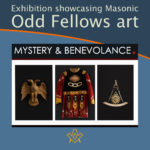 Exhibition showcasing Masonic, Odd Fellows art Art and education in the Hoyt’s newest exhibition, "Mystery & Benevolence: Masonic and Odd Fellows Art", explores the art and accessories of two fraternal organizations steeped in symbols and coded systems, from special handles, gestures and passwords to ritualized performances that probably come from the Middle Ages. |
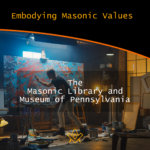 Since 2018, The Masonic Library and Museum of Pennsylvania’s “Embodying Masonic Values” open art competition has provided an opportunity for participants to explore Masonic values through art. Cash prizes are awarded to winners in five categories: Oil, Three-dimensional, Drawing and Print-making, Water-Based Medium and Digital Imagery. Most artwork is also available for sale. |
 Freemasonry in Popular Culture P4 - TV Part 4 of our series on Freemasonry in Popular Culture takes a look at some of the TV series that feature Freemasonry. With much intrigue into the supposed machinations of the Freemasons within business, politics and the police force, TV was a ripe medium for ridicule and sensationalist anti-Masonic propaganda. |
 Freemasonry in Popular Culture P3 - Comic Books and Graphic Novels Part 3 of our series on Freemasonry in Popular Culture takes a look at some of the comic books and graphic novels that feature Freemasonry. |
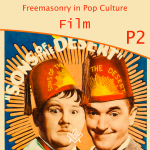 Freemasonry in Popular Culture P2 - Film Following on from Part 1 of Freemasonry in Pop Culture we take a look at Masonic depictions in film. |
 Freemasonry-membership is a mysterious NFT project that would be built across the Metaverse. Taking the idea from virtual lodges, the project is a huge mystery in terms of assets and value for the user. |
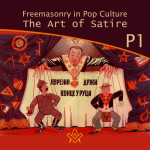 Freemasonry in Popular Culture P1 - The Art of Satire Freemasonry has been the subject of satire and lampooning since its inception in the 1700s courtesy |
 First Three Degrees of Freemasonry by Grant Wood For many of us, the name of the artist Grant Wood doesn’t ring any bells. But on a recent visit to the Grand Lodge of Iowa Masonic Library and Museums, I discovered a hidden gem – Grant Wood's vision of 'The First Three Degrees of Freemasonry'. |
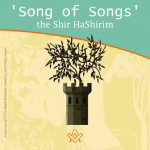 'Song of Songs' - the Shir HaShirim Freemason, composer and artistic director Laurențiu Ganea announces the premiere of his long-awaited composition of the 'Song of Songs' - the Shir HaShirim (also known as the 'Song of Solomon'). |
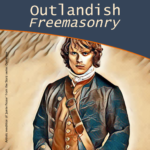 Martin Bogardus explores the Masonic characters and symbolism within the hugely successful 'Outlander' books and TV series. |
 The Masonic Art of Ari Roussimoff The Art, Masonic Aprons, and Magic of Ari Roussimoff - interviewed by Elena Llamas |
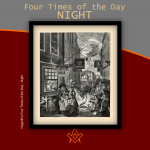 Hogarth's mockery of Freemasonry. A humorous depictions of life in the streets of London, the vagaries of fashion, and the interactions between the rich and poor. |
 This entertaining and infectious poem was written by an Ayeshire poet |
masonic knowledge
to be a better citizen of the world
share the square with two brothers

click image to open email app on mobile device


